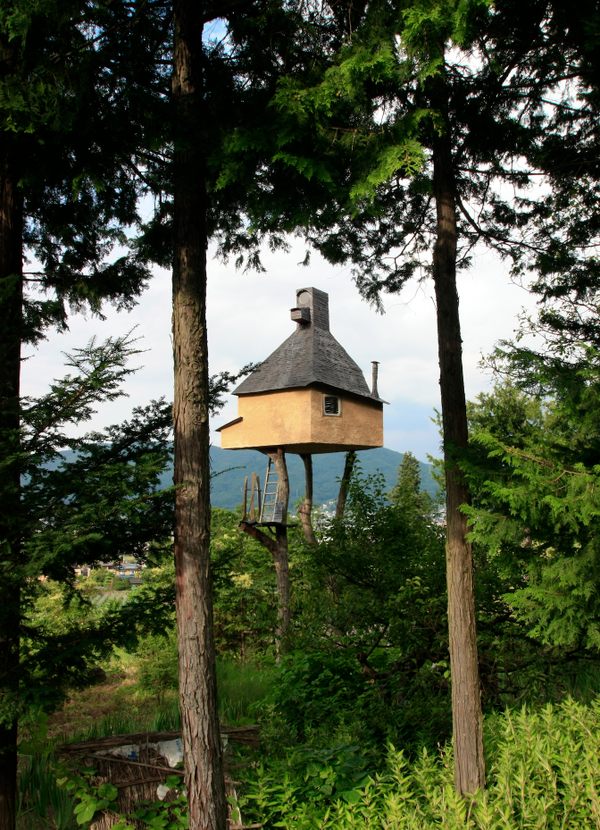In the mountains of central Japan, not far from Lake Suwa, stand a number of structures that look like they came out of folklore. There’s a small plaster cabin perched atop two chestnut trees. Not far away, a round structure that looks like a large walnut, suspended in midair. These are just a few of the teahouses designed by Japanese architect Terunobu Fujimori.
Fujimori started designing teahouses in the early 2000s. Two of them are located in the architect’s hometown of Chino. The taller one is Takasugi-an (known as the “High Cabin” or the “Too Tall Teahouse”), built in 2004. It stands atop two six-meter-tall tree trunks, and the entrance is a trap door at the bottom of the structure that can be accessed by a ladder.
In 2010, Takasugi-an was joined by the Flying Mud Boat, which was designed to be mobile and suit a wide range of environments. The main structure has two pieces: a bottom half made out of mud plaster and a top half made out of wooden shingles, dotted with circular windows on either side. The nut-shaped teahouse hangs in the air, suspended by cables connected to wooden supports on either end.
The teahouses are located near the first building that Fujumori designed, the Jinchokan Moriya Historical Museum. It was built in the 1980s for the Moriya family, whose history dates back thousands of years in this region. While the museum is not quite as whimsical as the teahouses, it displays hallmarks of Fujimori’s style, including mud plaster, wooden shingles, and a unique shape.

